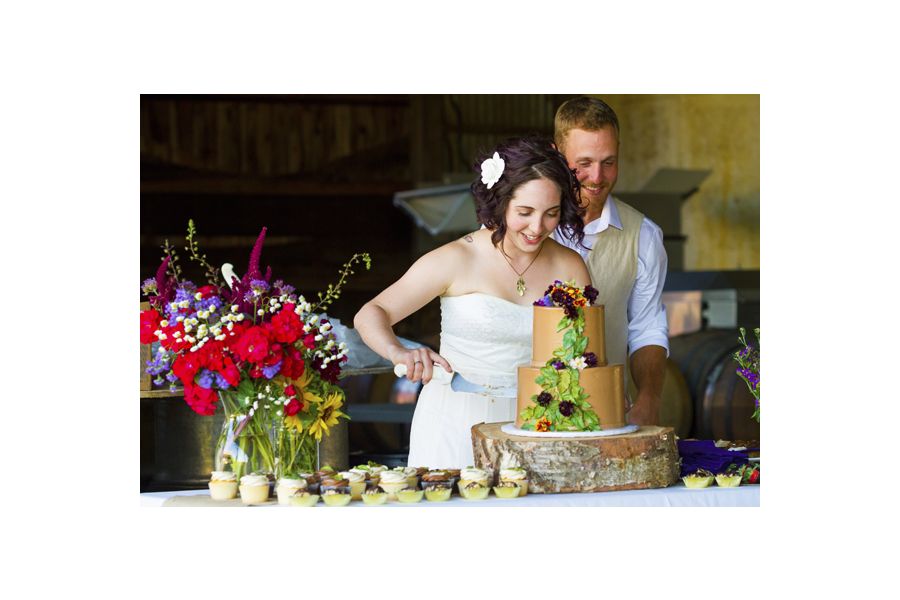Bring On the Wedding Cake

Cream cheese frosting or fondant? Classic vanilla cake or coffee with salted caramel filling?? Fresh flowers to decorate your towering tiers, or delicate details made from sugar paste???
When it’s likely to take center stage at your reception and serve scores of guests, deciding on the style of wedding cake that’s right for you can get a little overwhelming. But there’s no need to spend another second sweating your sweets – this wedding pastry primer will help you make the perfect choice.
Frosting and Fondant
According to Katie Blackwell-Martin, owner of Katiebelle’s Cakes in Charlotte, North Carolina, buttercream is the most popular wedding cake frosting. “It works especially well with more intricate designs or decorations, as you can easily cover minor imperfections with a scroll, dot or flower,” she says.
But do keep in mind that buttercream is better suited to indoor, air-conditioned venues, as a breeze may cause this stickier frosting to attract debris and hot weather can lead to a melted mess.
Another “frosting” option that has recently staged a comeback is rolled fondant, which has a thick, dough-like consistency. It had a bad reputation for a number of years because the only brand available nationally tasted terrible, says Kevin Kossman, co-owner of Piece of Cake Desserts in Mesa, Ariz., but now there are a number of great commercial and homemade options with a pleasing flavor similar to marshmallow. Blackwell-Martin also recommends chocolate fondant – her own wedding cake was covered in white chocolate fondant with white chocolate Swiss buttercream beneath.
The benefit of fondant is that it provides a silky, smooth surface that can look chic on its own or provide a fantastic canvas for more intricate designs, such as airbrushing, stencils, weaving and more. “It’s also great for outdoor weddings, providing a protective layer that will stand up to more challenging temperatures,” Blackwell-Martin says.
Other frostings that work with a limited number of cake designs include whipped cream, chocolate ganache and cream cheese, Kossman adds.
Flavors
Kate and William opted for the traditional royal fruitcake, while here in the U.S. the iconic wedding cake is a classic white. But with the countless old favorites (carrot cake, red velvet, German chocolate), seasonal flavors (hazelnut chiffon with cherry marmalade) and gourmet combinations (like Blackwell-Martin’s double dark chocolate with pistachio mousse or Kossman’s rum-infused white cake with bananas foster filling) now available, you should feel free to get creative with as many tiers as you like.
Embellishments
Fresh blooms are an easy route, but bakers have numerous decorating techniques at their disposal, says Kossman, including buttercream and royal icing for piping; fondant and gum paste for sugar flowers and edible pearls; and modeling chocolate for toppers and other accents. They also use can pastillage (like a sweetened Play-Doh) to make decorations or isomalt, a sugar-substitute that’s great for making decorative jewels, Blackwell-Martin says.
In addition, marzipan works perfectly for delectable faux fruit, edible luster dust adds sparkle to details, or, for faux bois (false wood), a wood-graining tool and chocolate panels create a fun woodland motif.
© Brides 365